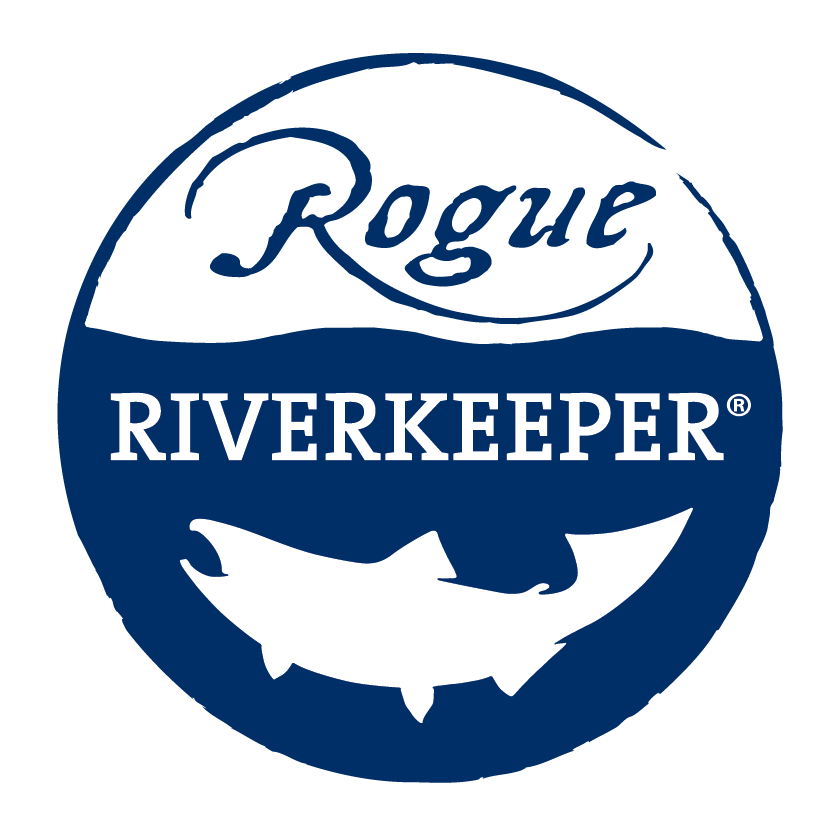A First Step to Reforming Oregon’s Forest Practices
A view of private forest lands within the Rogue watershed.
Oregon’s laws and rules for the protection of forest waters are outdated and ineffective, allowing streamside clearcut logging and aerial spray practices that are prohibited in Washington, Idaho and California.
A view of Big Butte Creek flowing private forestlands.
As just one example, Rogue Riverkeeper has been advocating for the past four years to the Oregon Board of Forestry to remove the “Siskiyou Exemption.” This leaves many streams in the Rogue watershed with weaker standards than the rest of western Oregon. Current regulations allow industrial timber companies on private forestlands to cut down trees much closer to streams than is currently allowed in other places in the state. Cutting trees near streams means less shade and warmer, dirtier water, which can harm salmon and put clean water at risk.
Oregon’s current forest practices are already decades behind other states, and our streams and salmon can’t wait another decade.
On February 10th, 2020, we joined with groups from all sides to adopt a process that we hope will lead to improved protections under current forest practices on state and private forestlands.
This agreement includes new rules on spraying of pesticides, removes the “Siskiyou Exemption” to apply the most updated rules to much of the Rogue watershed, and establishes a process to adopt comprehensive reforms to Oregon’s current forest practices.
What does the agreement do?
In summary, this agreement establishes:
A commitment to support legislation in this short 2020 legislative session that would apply the 2017 salmon, steelhead, and bull trout (“SSBT”) stream buffer requirements to the Siskiyou region, which includes much of the Rogue watershed;
A commitment to support legislation in this short 2020 legislative session that reforms aerial pesticide spraying practices. This includes:
Increased notification for Oregon residents, including real-time alerts, during pesticide spraying on forestlands; and
A ban on aerial pesticide spraying within 300 feet of schools and homes, within 300 feet of all drinking water sources, and within at least 50 feet of salmon streams and upstream waterways.
A commitment to working together to develop comprehensive legislation to reform current forest practices. This legislation will form the basis for a federally approved plan to protect salmon and other aquatic species in the state, known as a Habitat Conservation Plan.
Read more about the agreement.
Critically, however, improved protections for clean water and healthy forests are not guaranteed as part of this agreement or at the end of this process.
Why does this matter for the Rogue?
A tributary to McDonald Creek in the Wagner Creek watershed.
This agreement is a first step towards closing the gap to reform forest practices in Oregon to better protect clean water, thriving forests, and healthy communities.
Critically for the waters of the Rogue, this agreement moves the ball forward for our region by removing the Siskiyou Exemption. This means that streams that support salmon and steelhead in the Siskiyou region will now fall under the moderately more protective stream buffer standard that was adopted in 2017 for the rest of western Oregon.
Further, it creates a new opportunity for comprehensive reforms of the Oregon Forest Practices Act here in the Rogue watershed and across the state.
What’s next?
There are no easy answers and this first step would not even be possible without the hard work of citizen activists, organizers, and scientists across the state who have been calling for change for decades. Improved protections for clean water and healthy forests are not guaranteed at the end of this process.
For this to move forward, the Oregon Legislature will first need to pass legislation in the short 2020 session that enacts laws related to aerial pesticide spraying, stream buffers in the Siskiyou, and establish a process to develop a statewide Habitat Conservation Plan. If those three elements are met in legislation passed in 2020, then both sides have agreed to drop their respective ballot initiatives on forest practices, along with related litigation.
We’re committed to advocating for the strongest protections for the waters of the Rogue and our communities here in southern Oregon that rely upon them.



